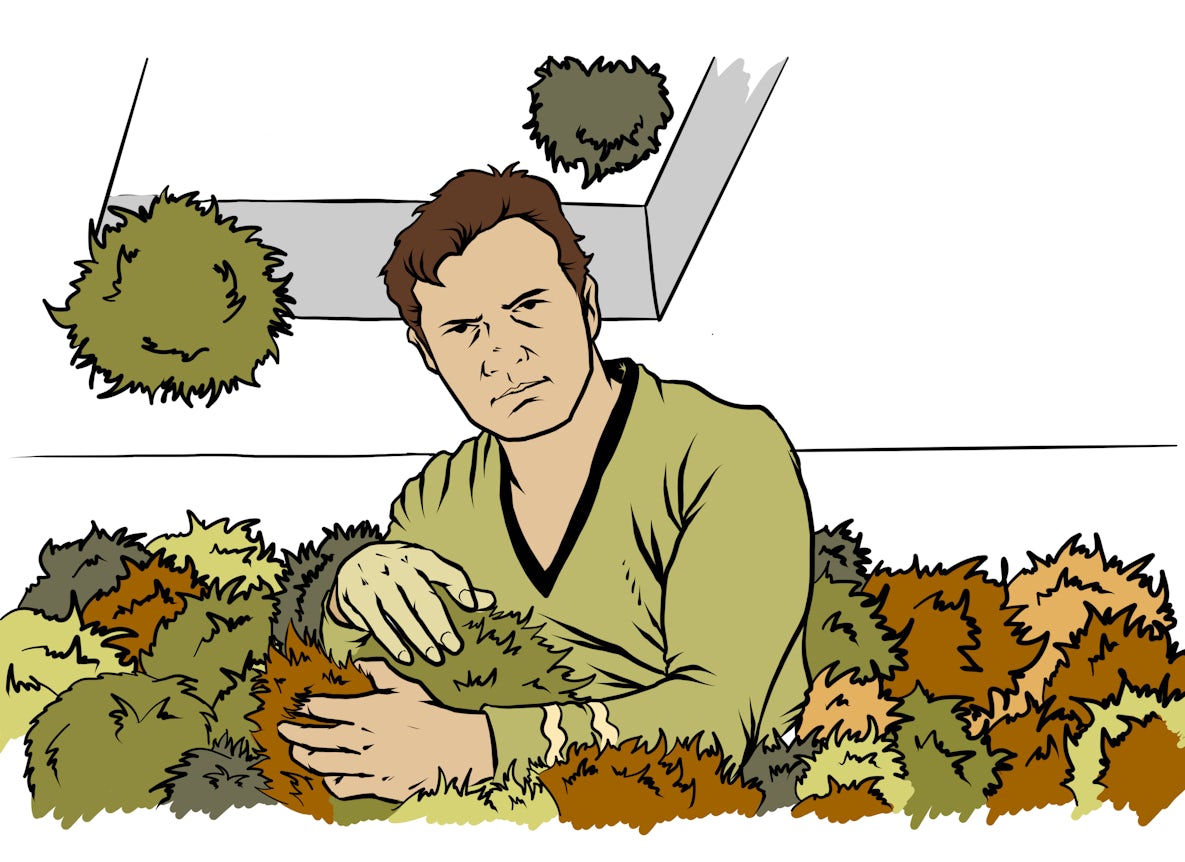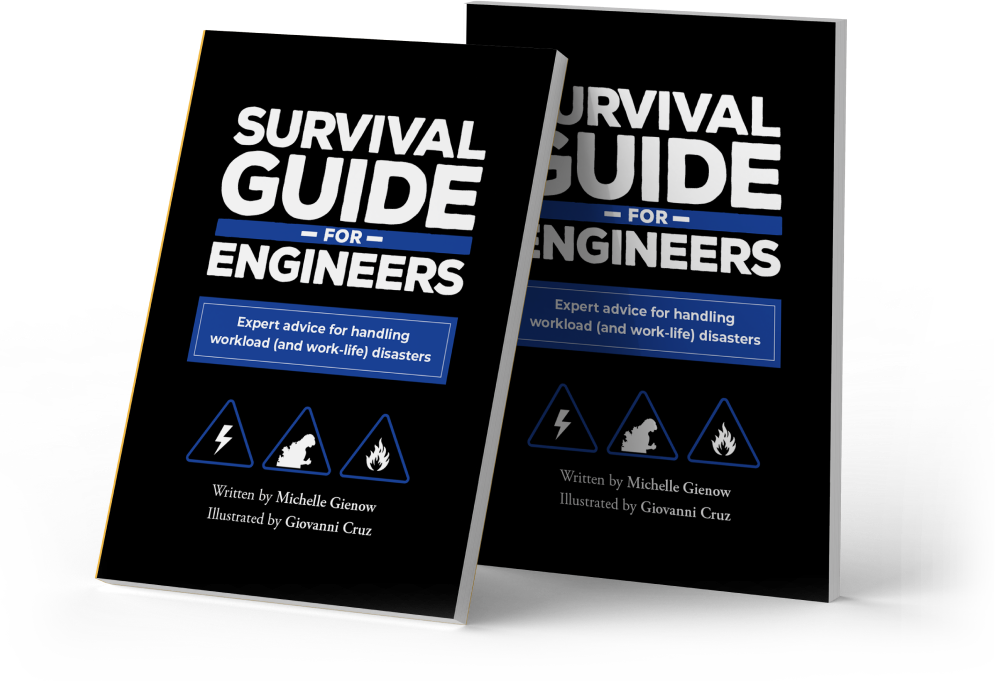
 [ Guides ]
[ Guides ]
The Engineer's Survival Guide
What's your plan for when Godzilla stomps your data center? Consult this handbook of humorous yet helpful expert tips for surviving your job, your workplace, and attack by legendary monsters!
Live, laugh, download for free ->The job of a software engineer/platform architect/DevOps diehard is not simply “all tech, all the time.” We survive a diverse variety of challenges every day, and only a portion of these are purely technical:
- Architects: Y’all need to be at the front edge of adopting new, innovative technologies that will help Engineering / Product deliver better for the business…all while not taking on too much technical risk….or triggering risk by moving projects along too fast OR too slow. Simultaneously, you have to have to influence and sell your vision up, down, and across the org hierarchy – and keep everyone (mostly) happy while doing it.
- Senior engineers: Beyond building All The Things, you are the sweet fondant filling holding together the unyielding wafer cookies of company leadership and boots-on-the-ground developers. You get to manage both up and down simultaneously, managing projects dropped from higher up, often with delusionally short deadlines (“We can do this db migration in two weeks, right?”) and translating that into actionable goals for your team(s).
- Ops: You are the tireless foundation holding up literally everything else, yet nobody really pays attention to what you do…Until you don’t do it. Then they come bearing torches.
- Everybody else: No matter the title, we all need to survive things like RTO, eating too many free snacks, and endless soul-sucking meetings that should not have even been emails.
It was in this spirit of solidarity, hoping to offer some humor and maybe even a few actually useful suggestions, that I wrote The Engineer’s Survival Guide: Expert advice for handling workload (and work-life) disasters, just published by Cockroach Labs. The book, deftly and hilariously illustrated by Giovanni Cruz, offers top tips from experts for surviving your job, surviving the workplace, and surviving whatever comes next. (Which, these days, could be just about anything).
Get your free pdf copy at www.cockroachlabs.com/guides/engineers-survival-guide. Meanwhile, enjoy this bonus survival tip (director’s cut version!) we resuscitated from the cutting room floor.
How to answer the question When are WE getting AI??? without screaming inside
Ah, AI — the trend you must embrace, lest ye be rendered desperately obsolete. This is one rabbit hole from which there is no escape.
For a long time, generative AI was “coming soon.” We knew AI was out there, hovering vaguely on the horizon, even if there was no way of knowing when exactly it would get here. (Or what it would actually look like when it did finally arrive — early AI felt more like a party trick than a useful tool).
But then this year AI suddenly got here all at once, bringing with it fast-follow, sky-high pressure to incorporate AI into your product/service/software ASAP. FOMO or no, when you’re one of the people tasked with bringing new tools and tech into your org, these days people only care about one thing: “When are we getting AI?”
The question comes at you nonstop and from every angle: in the boardroom, at the coffee machine, in the elevator, in Donut sessions with your remote team, from the next restroom stall over. Even the lunchroom is not safe: You want fries with that? Hey, by the way, when are we getting AI?
It’s easy for them to ask. They’re not the ones who must figure out a safe course between the twin perils of wasting resources by bringing in AI too soon vs. waiting too long and lagging behind competitors. This is achingly new tech, and the risks are real: embracing AI that discriminates against customers or employees, that violates consumer rights, or that leads to making bad, costly decisions.
But looking before you leap is the kind of smart move that can quickly turn dangerous when enterprises freeze up in an infinite loop over everything they don’t yet know about AI. At the other end of the spectrum, however, lies too much action — too fast and, quite often, in the wrong direction. (For example, does the world really need AI-powered toothbrushes?)
Your job is to safely pilot the SS Enterprise between falling into the black hole of analysis paralysis while not flying too far and too fast without enough data, straight into a supernova. The trick is to focus on the things that won’t change — yes, there are some — even as the generative AI space goes on morphing around us faster than tribbles reproduce.
Doubling down on the non-fungible fundamentals first leaves you ready to launch when the stars do align for bringing the right AI tools (or cyborgs) into your org. Even better, it gives you a plausible yet positive way to respond when asked, for the eleventy-billionth time, what the plan is for AI adoption in your organization.
Follow these survival tips and eventually you, too, will be able to say a confident “Good morning!” to your colleagues without fear.
New tech, who dis?
Architects/senior engineers/ in positions of influence have to resist the black-hole gravity field created by the pressure to chase shiny new tech (AI, AI, AI! Did we mention “AI”?) that comes from every angle.
No matter how paradigm-pushing AI is, though, it still requires the same technology evaluation process as any other tech adopted into your org. This immutable fact is your ace in the AI hole. Everybody wants the shiny thing, but hardly anybody wants to do the serious up front analysis to make sure it’s the right thing: Adoption cost. Capability. Usability. Interoperability and ease of integration. Potential threats/risks. And let’s not forget everybody’s favorite, legal compliance.
So, when people are pounding at your door (proverbially speaking; who has an actual office anymore?) and demanding AI answers, drop this line on ‘em: We are currently in the process of aggregating proactive evaluation infrastructures to disintermediate the known unknowns before integrating AI into our mission-critical operations.
This is just a fancy way of saying “we are evaluating AI technology for adoption.” Then, you tactfully slip out the aforementioned door while they are working out what it was you just said.
Off to work you go
Cool. Now that you’ve bought yourself some breathing room, here is where the real work begins. You will need quality data, APIs that enable interaction with your business’ capabilities, and some hands-on experience with the types of APIs in the Generative AI ecosystem.
1. No dirty data.
First thing to consider is your data foundation, since this is what any AI you bring in will need to train on. GIGO still applies. Are your data management practices sound and thorough? Is your data well-cataloged and of good quality? Do you have metrics that track data freshness and completeness?
In other words, don’t feed your AI dirty data. If you don’t have a good answer for each of those questions (don’t feel bad, just about every org falls short in at least one of these areas) you’ll need to do a proper “data cleansing.” I.e., the process of preparing data for analysis by fixing or removing anything that is incorrect, incomplete, irrelevant, duplicated, or just plain old improperly formatted.
2. Make time for play time
More knowledge about and experience with AI leads to making more informed and better decisions. So learn by doing. Pick an AI platform that intrigues you and play with the tech. Pick a useful use case. Pick an LLM. Pick a database applicable to your use case. Do some stuff.
AI technologies will inevitably change, and quickly but the patterns for interacting with them will not. Most of the time it’s just interactions with more and different APIs anyway.
3. Open the API doors
An application programming interface (API) defines the interactions possible between separate and distinct pieces of software so they can request and return/present services — all without them needing to know anything about the other. This layer of abstraction enables simple execution of complex interactions, which to be honest may be the only simple thing about AI.
APIs allow an enterprise to better deliver diverse data and services to customers, both internal and external. Whatever AI tools/solutions you adopt are almost certain to be your biggest internal “customer.”
This is why the time to assess your API foundation is before you bring in AI: How well are your organization’s business capabilities served using functional, and reusable, enterprise APIs?
In order to harness AI — particularly for business goals like automation and capturing efficiencies — you are going to need a way to interact with it, both digitally and physically. APIs are how to open the pod bay doors.
4. Robots need people, too.
Great! Now that you’ve established a solid foundation of AI-friendly data quality and management, created APIs for any necessary interactions between AI and your existing system’s capabilities and services, and gotten yourself some hands-on experience with the generative AI ecosystem, you are ready for the final step in onboarding AI: recruiting the human support crew.
In fact, even while working through the first three phases of AI reality testing and exploration, you are probably already building relationships and collaborating with other teams as part of the AI adoption initiative. The data and analytics folks will help with the data cleaning. Engineering, platform and developer teams will help wrangle the AI APIs and try them out internally. Others to include now, if you haven’t already, include your security, compliance, and of course legal teams.
Choose your wormhole wisely
Yes, there is a lot to learn about harnessing AI to provide real business value without, you know, bringing about utter destruction. And, yes, the AI ecosystem (not to mention the entities that bring it to us) is constantly evolving. The key is to set aside everything that is currently unknowable — nobody knows this stuff, we are in the process of inventing it! At the same time, however, don’t let the lure of tantalizingly shiny, truly paradigm-shifting technology (not to mention crushing peer pressure) lead to diving head first into what could very likely be the wrong AI wormhole.
Instead, focus on the things that won’t change and that are within your control. This leaves you well positioned to take advantage of the right opportunities for your org, when time and conditions are right.
Congratulations! You have aggregated the proactive evaluation infrastructures and synergistically orchestrated error-free human catalysts. Your executive leadership will thank you, and you can finally walk to the bathroom in peace.
If you’ve read this far and found it to be entertaining, possibly even useful, go read the actual book (for free)!
